 An exhibit of student work by
An exhibit of student work by
Brian Aebi, Amy Chan, Braeden Cox, Gage Hamilton, Russell Kamp, Matt Pfliiger, Andrew Pomeroy, Steven Robinson, Brad Saiki, Lauren Seiffert, Tanya Tracy, Chris Wilson, and Zach Yarrington
On exhibit and open to the public from November 1- December 1, 2010, 8am to 5pm, Floor 4R
A&AA in Portland | Department of Art | Digital Arts Program | University of Oregon
At their own instigation, Professor Kartz Ucci’s students in University of Oregon’s Portland Digital Arts Program have been collaboratively exploring representations of rubefaction. Currently on exhibit in the corridor gallery of floor 4R is a display of redness: what turns red, what is red, runs into the red zone, or what makes you blush, what causes redness and what can be splashed, saturated, depicted or infected with the rubicund hue.
Examining what we fill our hearts with, Brian Aebi’s “It’s the Hole in Your Heart” distances him from the digital realm. “It has nothing to do with digital,” he says, “it is a statement about how you can be so surrounded by digital that you forget about all other things. For this project I used only things not related to digital media: the materials, my actions, my thoughts, nothing here is related to digital. I am so surrounded, I didn’t want to forget about other things.” The redness of the heart and the swirling of crimson acrylics in Aebi’s sequence mesh color with thought.
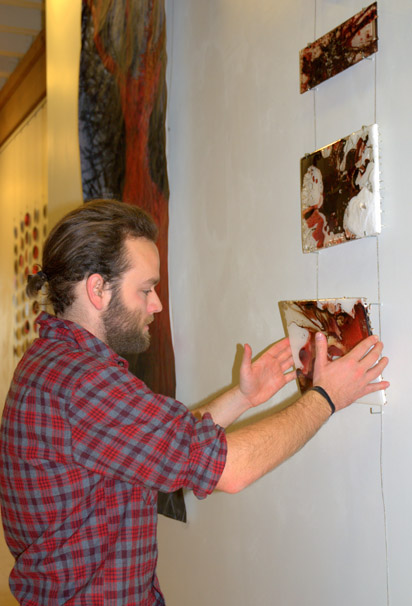

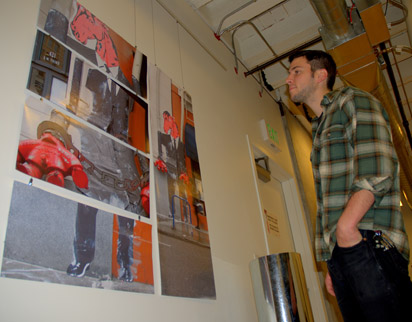
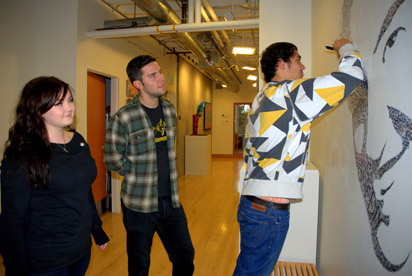
Another inquisitive piece proposes: what makes you blush? Maybe a readable text portrait….of yourself? Students delved into the images made by identity information and how this might raise issues about the ways in which information can be used as art. Only making this project all the more tantalizing, the image is of UO professor John Park, a former model and rumored to be very modest and blush easily. Black Sharpies were employed to write words and phrases and symbols pertinent to the students’ perception of this instructor. It probably goes without saying, the goal is to make Professor Park b-l-u-s-h.
Lauren Seiffert describes her work depicting the “Thymus Gland,” an organ in the human body that plays a key role in the development of the immune system, as having “glittering beads that creep around the gland like a disease.” It is the sparkling and vibrant scarlet of the beads that “betray the gland by displaying a glistening redness” in deception of encroaching illness. Although beautiful, here redness brings sickness.
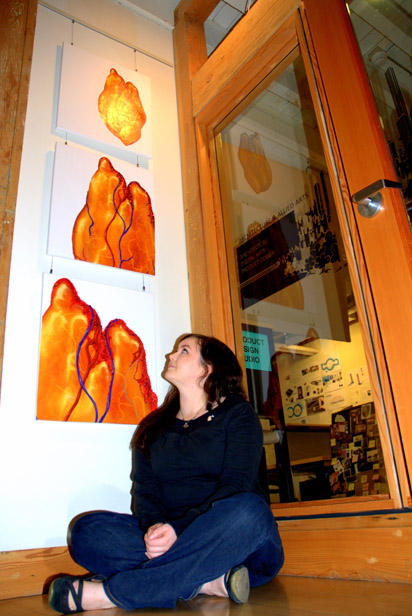
It might appear a bit gruesome, however Matthew Pfliiger’s work, “Drain Me,” (a pair of hands severed at the wrists, words and letters pouring out of the bloody limb ends) incorporates symbolism students can relate to. “Sometimes I get typing and writing so much I feel like the words and letters are coming out of my hands,” says Pfliiger. On close examination, this set of hands with keyboard keys flowing out, has the words “Drain Me” gushing out of the keys. Pfliiger’s logic: “With the fingertips having a touch of red on them, you get the feeling that this repetitive action will never stop ’til the subject is fully drained…which may lead you to the question, ‘How long has this been going on?'” Pfliiger used his own hands as the mold for this piece.
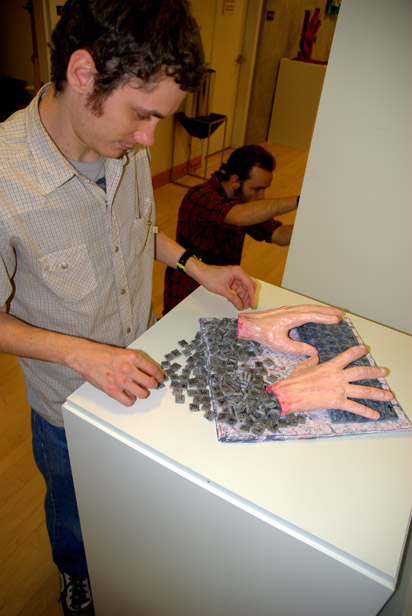
While there are representations of salmon and a stag that bring glowing attention to rubescence in nature, students have also confronted viewers with hotly provocative topics embracing both language and the confluence of sex and love. In Gage Hamilton’s “LUST,” he set out to create a time-based piece that would show an inescapable passing of time. A glossy, red “LUST” perched amid wilted scarlet rose petals drips thick with tinted resin and is held aloft by a bunch of helium filled prophylactics, now drooping to the floor. Time passes, all things fade.
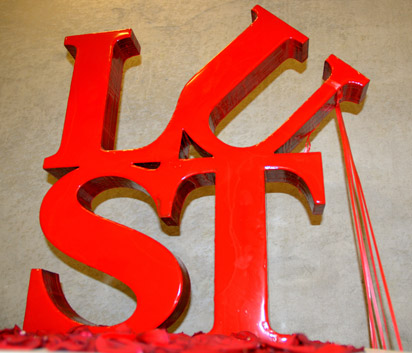
The exhibit concludes with Amy Chan’s delightfully posed “When Can We Get Together Again?” And, judging from the image, it is a fable-tale ending.
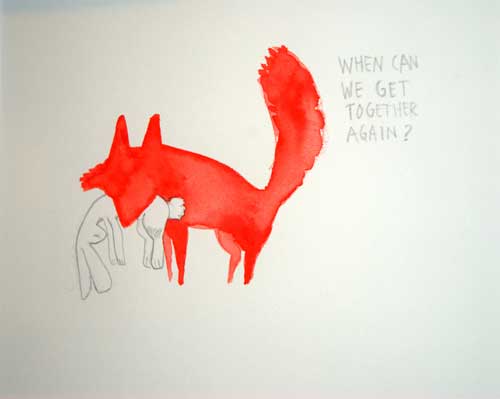
Story and photos: sabina samiee